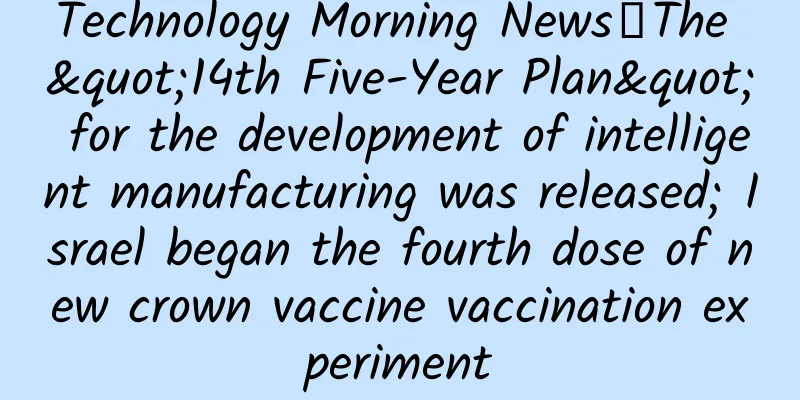The neglected soil is inextricably linked to our human health | Chen Nengchang

|
April 22nd of every year is Earth Day, a festival set up specifically for the protection of the world's environment. It aims to raise public awareness of existing environmental issues and mobilize the public to participate in environmental protection movements, improve the overall environment of the earth through green and low-carbon living. However, environmental protection is by no means an empty slogan. Today, let us start by learning about soil knowledge and understand the current situation facing Mother Earth! Soil, as the "skin" of the earth, nurtures countless lives and provides us with abundant food, but we tend to ignore it because it is everywhere. With the frequent outbreaks of agricultural product safety incidents such as cadmium rice and toxic ginger in recent years, we are increasingly worried about the current state of the soil that nurtures them. ● Definition and origin of soil When it comes to "soil", the concepts of "soil" and "soil" are slightly different. "The Book of Zhou" says: "The soil where all things grow naturally is called soil, and soil is like spit. The soil where people cultivate and grow trees is called soil, which has a gentle appearance." Since then, our ancestors have begun to distinguish between "soil" and "soil". "Soil" refers more to the material that supports natural life without being developed by humans, while "soil" refers to the material that supports human life and is more related to the fertility of the land, which is what we often call "land power". Why is there such a distinction? It all started 12,000 years ago when humans realized that the soil beneath their feet could produce more food. The beginning of agricultural civilization meant that humans no longer had to work hard for hunting and gathering. It can be said that soil laid the foundation for human survival and development. ▲Unraveling the anthropological meaning of “土” from the composition of Chinese characters If you observe carefully, you will find that many of our Chinese characters are actually evolved from the character "土". For example, the character "生" is a combination of "牛" and "土". With soil and cow, life can begin. ▲Researcher Chen Nengchang took a photo with the oxen working in the field at the scientific expedition site In this sense, the word "soil" seems to have been given a deeper anthropological meaning. After analyzing "soil" and "soil" from the literal level, how important is "soil" itself? As the saying goes, "everything grows in the soil." Of the 8.7 million species of organisms currently living on Earth, a quarter of them live in the soil. On the one hand, the life in the soil forms a huge food web, driving the material cycle of various elements in the soil. These processes make the soil full of vitality and vigor; on the other hand, the matter after the death of life accumulates various organic matter in the soil, especially humus, creating soil structure and enabling the soil to retain water and fertilizer. Some people may say that this is just an endless cycle, but they don't know that the actual process of soil formation is extremely slow. It takes about 0.05 mm of soil every 500 years, which means that it takes at least 18,500 years to form soil as thick as a coin. China's 5,000 years is not even a fraction of the time it took to form a thin layer of soil. Otherwise, how can we say that soil is a non-renewable resource? It is a strategic resource more important than oil. Everyone must be curious about how such precious soil is formed. This is due to the weathering of rocks. Over tens of millions of years, with the cracking of rocks due to thermal expansion and contraction, the invasion of lower organisms (such as cyanobacteria, lichens, and mosses), the dissolution of chemicals and organisms, and the continuous accumulation of organic matter, the clearly layered soil profile we see is formed. ▲The left is a natural soil profile, and the right is a rice field profile (in is inches, 1 inch = 2.54 cm) ● The available arable land area in my country has dropped significantly It is not difficult to see from the above picture that there are differences between soils. Many people think that our country ranks third in the world in terms of land area, with a vast territory and abundant resources, and soil is definitely "not a problem" in our country, but in fact, not all land is arable land. According to the "Third National Land Survey Main Data Bulletin"¹ released on August 26, 2021, my country's arable land is 127.8619 million hectares (1917.9279 million mu). Compared with the second national land survey, the country's arable land has decreased by 113 million mu in 10 years, which is equivalent to the reduction of an entire Ningxia Hui Autonomous Region. ▲Image source: Zhiyan Consulting As one of the most important indicators of arable land fertility, in the past 30 years, although there are regional differences in soil organic matter, due to the promotion of straw return to the field, no-tillage and minimum tillage technology, and the application of green manure and compost, the content of organic matter in the topsoil of China's farmland has shown an overall upward trend. The national average content of organic matter in the topsoil has increased by 24.49% compared with the second soil census. However, it still cannot withstand the high-intensity use of farmland soil, and the current soil organic matter content in our country is still at a relatively low level compared with foreign countries. ● Types and current status of soil pollution Food is based on grain, and grain is based on soil. Take rice as an example. In addition to the artificially added "flavored rice" exposed in this year's 315 Gala, everything grows on the soil. If the soil for cultivating crops is polluted, it will also lead to food safety problems, such as the "cadmium rice" and "toxic ginger" incidents also exposed by CCTV. We know that soil is an open system. Therefore, pollutants illegally dumped by humans, air, water and solid waste pollutants generated by industrial activities, and agricultural materials with pollutants generated during agricultural activities (such as animal fertilizers, mineral fertilizers, etc.) may enter the soil and cause pollution. In addition, with the acidification of soils with high heavy metal background values, heavy metals may also be converted from insoluble states to plant-usable states, causing soil pollution and excessive metal content in crops. (Note: Soil background value refers to the content of chemical elements and compounds in the natural environment that is not affected by human pollution. High background means that the natural content of heavy metals in the soil is very high, not caused by human pollution.) ▲Interaction between soil and surrounding environment As early as April 17, 2014, the "National Soil Pollution Survey Bulletin"² showed that the overall soil environmental situation in the country was not optimistic. Soil pollution was serious in some areas, the environmental quality of cultivated land was worrying, and the soil environmental problems in industrial and mining wastelands were prominent. According to the pollutants, soil pollution can be divided into inorganic pollution (heavy metals, etc.), organic pollution, biological pollution and radioactive pollution. Judging from the distribution of pollution, soil pollution in the south is more serious than in the north; soil pollution problems are more prominent in some areas such as the Yangtze River Delta, the Pearl River Delta, and the old industrial base in Northeast China. The scope of heavy metal exceeding the standard in the southwest and central-south regions is relatively large, but it is mainly caused by high background. According to the pollution source, soil pollution can be divided into atmospheric, water, slag and road pollution. As the world's factory, my country has also emitted considerable amounts of cadmium into the atmosphere, and also considerable amounts of heavy metals entering the soil through dry and wet deposition. The spread of this type of pollution is related to the flow of air. Water pollution is mainly caused by sewage irrigation; slag pollution affects a smaller area, while road pollution is mainly within tens of meters on both sides of the road, and the degree of pollution is related to the volume of vehicles. ● The relationship between soil pollution, food safety and human health After talking about so much from a macro perspective, the most important question for everyone must be "What does this have to do with me?" The impact of soil pollution on human health can be direct, such as through food, soil contact, soil inhalation, or indirect, such as through drinking water, air, etc. The following picture can help you intuitively understand how soil pollution is closely related to our human life and health. ▲Translated by Researcher Chen Nengchang When talking about the relationship with food safety, we have to mention heavy metal pollution in soil pollution. Among the many heavy metal pollutions, cadmium pollution can cause more sensitive human health effects. The most typical case is the "Itai-itai disease" that occurred in Japan in the last century. This warns us that we should pay more attention to the problem of cadmium pollution in soil. How terrible is cadmium pollution? Its impact on our human body is subtle. The heavy metal "cadmium" is identified as a carcinogen. Clinical cases have shown that occupational "cadmium exposure" can cause lung cancer. Cadmium inhaled through other channels such as food and smoking is also related to prostate cancer and breast cancer. Low doses of cadmium can even affect diabetes. ▲Factors affecting the metabolism of heavy metals in the soil-plant-human (animal) system Cadmium is mainly accumulated in the kidneys and liver in the human body. When the cadmium in the renal cortex exceeds 200 mg/kg, the proximal renal tubules may be damaged, resulting in difficulty in reabsorption of urine protein and calcium. Because the ionic radius of cadmium and calcium is similar, cadmium can replace calcium in the bones and cause osteoporosis and softening. This is the root cause of "Itai-itai disease". ▲Rice on the left, wheat on the right my country has always had a food culture of "rice in the south and wheat in the north", and rice is the main food for people in China and even in Asian countries. Therefore, rice is the main source of cadmium for the human body (except for smokers). The Food and Agriculture Organization of the United Nations (FAO)³ stipulates that the limit of cadmium content in rice is 0.4mg/kg, and the limit of cadmium content in rice in my country is 0.2mg/kg. Nutrients such as calcium, iron, zinc, and selenium have a strong antagonistic effect on the absorption of cadmium by the human body. Since these nutrients are lower in content than other staple foods such as soybeans, wheat, and corn, and are mainly distributed in the cortex of rice, and cadmium is mainly combined with gluten and is distributed more evenly and stably in rice, when rice is processed from brown rice into polished rice and washed and steamed, 80% of the nutrients in the rice will be removed. Relatively speaking, only about 10% of cadmium can be removed. Therefore, cadmium rice itself is highly harmful. Let me respond to the "toxic ginger" incident that everyone is concerned about. The reason why toxic ginger is "toxic" is mainly because the lead content exceeds the standard. Generally speaking, the lead content limit of ginger is 0.1mg/kg. But compared with rice, ginger accounts for a very small proportion in the diet, and is often present in the form of condiments such as "shredded ginger" and "ginger slices". Therefore, in terms of safety, there is a difference between "cadmium rice" and "toxic ginger". I would like to speak for the majority of farmers. The heavy metal content standard of ginger needs to be discussed and optimized to ensure the healthy development of ginger production. At this point, everyone will definitely think of the online news that an old man who grew vegetables by himself caused his whole family to be poisoned and die. In fact, most of these reports have no direct relationship with soil pollution. Instead, they may be more related to pesticide residues, crop biological pollution, and pollution during food processing. After all, the impact of soil pollution on human health is usually chronic. If a report mentions that food poisoning is caused by soil pollution, its authenticity may require readers to judge again and again. ● Agricultural and sideline products that are safe to buy and eat At this point, some people may ask, how can we identify soil-contaminated crops? In fact, this is just like a doctor's consultation. We cannot directly deduce the specific cause of the disease based on a patient's symptoms. In fact, there is usually no significant difference in appearance between soil-contaminated agricultural products and qualified agricultural products. It is difficult for consumers to distinguish them based on appearance alone. They can only analyze them based on information such as origin and crop type. As just mentioned, the cadmium accumulation capacity of japonica rice is lower than that of indica rice and hybrid rice, and the cadmium content of japonica rice is lower overall; for vegetables, the cadmium content is generally higher in leafy vegetables, followed by tubers, and the lowest is in fruits and vegetables. ▲The relative ability of different types of crops to absorb soil cadmium and lead One way to judge is to start with the crop type. Another way is to look at the national health and safety certification. Earlier, my country's agricultural product certification was divided into three levels: pollution-free, green and organic, and the safety increased accordingly. ▲Three major types of agricultural product safety certification in my country in the past Pollution-free agricultural products refer to high-quality agricultural products and their processed products whose production environment, production process and product quality meet the requirements of relevant national standards and specifications, and which have been certified and obtained a certification certificate and are allowed to use the pollution-free agricultural product logo; green agricultural products refer to pollution-free, safe and high-quality agricultural products, specifically agricultural products that meet national health and safety food standards and are approved by specialized agencies to use the green food logo; organic agricultural products are agricultural products that are produced and processed in accordance with the principles of organic agriculture and the production methods and standards of organic agricultural products, and certified by organic food certification agencies. It is worth noting that in April 2001, the Ministry of Agriculture officially launched the "Pollution-free Food Action Plan". Since 2022, my country has stopped certifying pollution-free agricultural products and issuing certificates of origin for agricultural products. Therefore, the safe foods that are still available on the market and have been certified by the state are mainly "green food" and "organic food". Generally speaking, agricultural and sideline products sold through official and formal channels are safe and healthy foods that meet national quality inspection standards, and citizens can buy them with confidence. Author: Chen Nengchang, researcher at the Institute of Ecology, Environment and Soil, Guangdong Academy of Sciences. His main research directions are the root-soil interface behavior of heavy metals, nitrogen loss in plant leaves, control and remediation of soil heavy metal pollution, and analysis of the relationship chain between soil pollution, food security and human body. References ¹ "The Third National Land Survey Main Data Bulletin" http://www.gov.cn/xinwen/2021-08/26/content_5633497.htm ² "National Soil Pollution Survey Bulletin" http://www.gov.cn/foot/2014-04/17/content_2661768.htm ³ Codex Alimentarius Commission (2006) Report of the 29th session of the codex Alimentarius commission, ALINORM 06/ 29/41. Codex Alimentarius Commission, FAO, Rome |
>>: How do we determine whether a species is extinct?
Recommend
8 minutes to help you quickly understand data analysis (with book recommendations)
With data analysis being so popular in the past t...
How to create a high-click title and double the number of readers in 10 minutes?
In today's world of information explosion and...
If you drink one less cup of coffee every day, you can drive this artificial intelligence car that can send emojis!
It can be seen that today's automobile indust...
Tiemenguan SEO training: What is the value of the H1 tag to SEO? How to set up H1
As we all know, the H1 tag is one of the most imp...
Hot search! 2-year-old boy faces amputation, just because he went to the vegetable market? Doctors urgently remind →
Recently, the topic #2-year-old child infected wi...
Monetization methods and profit models of social products
There is a widely circulated formula in the Inter...
Build offline event promotion skills from 0-1!
There are activities every day, but good activiti...
Why do doctors also think spring is the golden season for growing taller?
Spring is the season for all things to grow, incl...
What does Toutiao’s headline number index mean? How to check the Toutiao account index?
Q: What is the Toutiao Index? What does Toutiao A...
8 things you should know about Apple Watch before the launch
Apple watch Apple's Spring Forward conference...
The subscription account messages are unread, where are all the fans?
Most of the public account fans are losing contac...
The most-liked answer on Zhihu: How are marketers made?
Today I saw some people who can analyze the suppl...
A complete App operation and promotion plan
1. Concept of App operation and promotion Quoting...
The first batch of iPhone 12 users became "guinea pigs": countless people were caught in the crossfire of "signal failure"
"Everyone else has a signal, why don't I...
Jilin City unblocking notice in 2022: When will it be lifted? Attached is the latest news!
On March 2, Jilin City discovered infected people ...


![Li Songwei's 16 Lectures on Cognitive Thinking [Complete]](/upload/images/67cc227a3b49c.webp)






